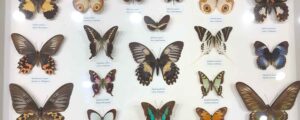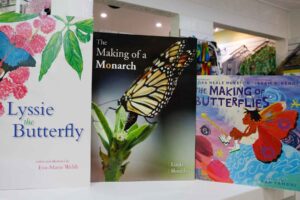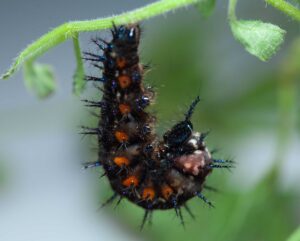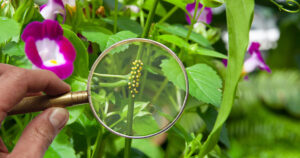Birdwing Butterfly | Laboratory Methods | Population Dynamics | Captive Breeding | Sex Determination
The Cairns Birdwing (Ornithoptera euphorion) is one of the most celebrated butterfly species in the world. With an average wingspan of 16cm, it counts as the largest butterfly species in Australia and indeed, in Far North Queensland. Since opening our doors in 1987, a key aim of the Australian Butterfly Sanctuary (ABS) has been to breed and showcase the iconic Cairns Birdwing butterfly. To do that, careful plans were constructed to grow its host plant, the Dutchman’s Pipevine (Aristolochia tagala), and to monitor population dynamics through our captive breeding program.

Over the past year, the ABS has successfully bred 957 Cairns Birdwing butterflies and in the last 37 years, approximately 35 000 individuals. This success is owed to our meticulous laboratory methods which ensures breeding stock butterflies are set at 65% female / 35% male ratio. Although female and male butterflies are very easy to tell apart due to their colours, ABS laboratory staff determine the sex of Cairns Birdwings at the pupa stage. It is possible to determine the sex of Cairns Birdwings at the caterpillar stage (see Weyland 1993), however, we found it more practical to work with pupa as (1) they move around less, and (2) display more distinct markings in the genital area.

In the pupa stage, butterfly genitalia are located in the section between the 8th and 9th-10th abdominal segment. Abdominal segments 9 and 10 are fused after the caterpillar stage and are therefore treated as a single abdominal segment at the pupa stage. Females display a vertical cut or incision through the 8th abdominal segment and into the depressed gap before the last abdominal segment (9-10). Males do not have a vertical incision in this area. Once sex is determined in Cairns Birdwing pupae by our laboratory staff, they are carefully prepared for pinning.
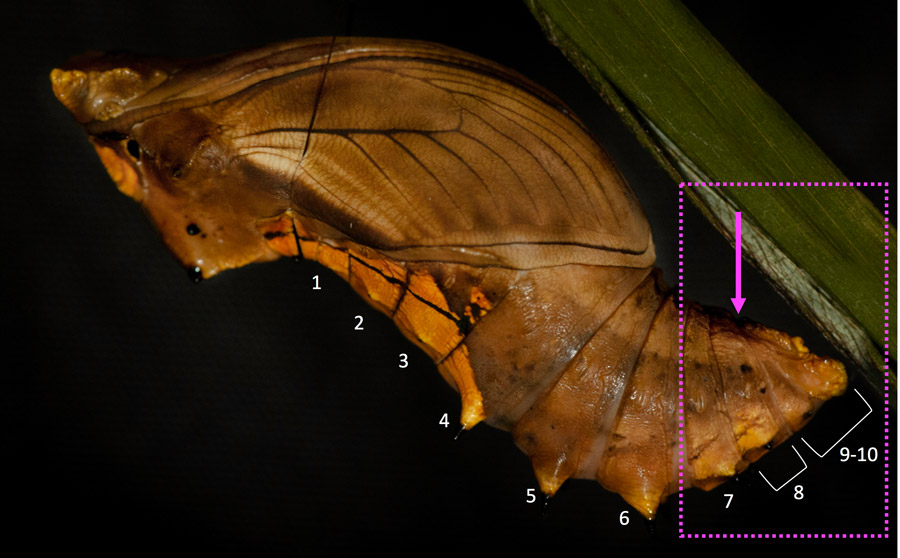
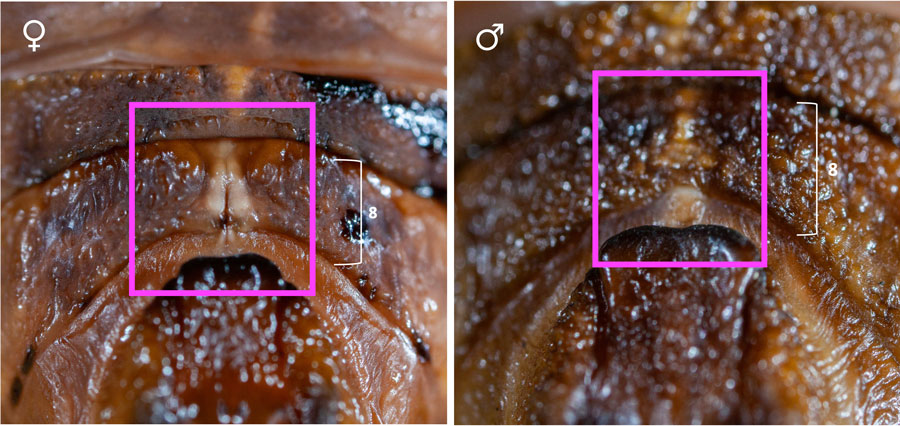
Pupae are pinned against a foam-mesh backdrop in anticipation for the butterfly’s emergence approximately 4 weeks later. It takes approximately 1 day for the butterfly to completely dry its wings and fuse its proboscis (drinking straw) together before taking first flight. Thereafter, Cairns Birdwing butterflies are usually ‘on the wing’ for about 6 weeks and are an absolutely magnificent marvel to witness first-hand. If you are visiting the Australian Butterfly Sanctuary, we encourage you to check out our ‘Butterfly Emergence Area’ to witness Australia’s largest butterfly, the Cairns Birdwing, take its first flight!
References
Weyland, S. (1993) Sex Determination of the Larvae of Ornithoptera priamus euphorion (Gray) (Lepidoptera: Papilionidae). Australian Entomology 20(1):12.



